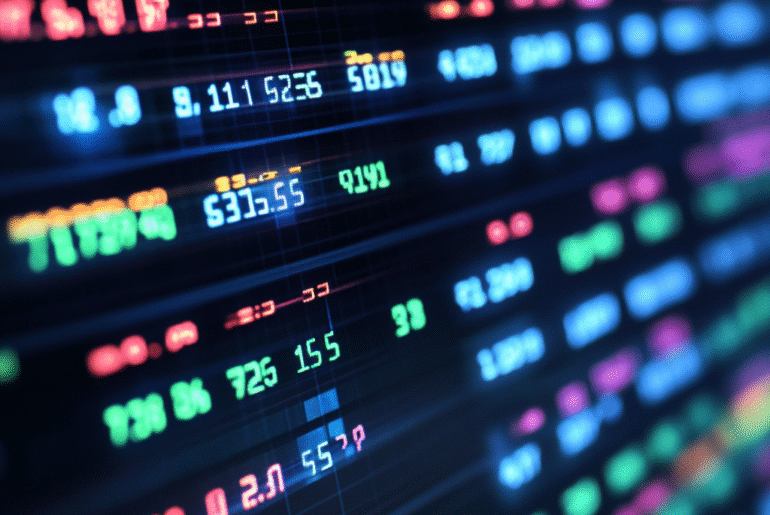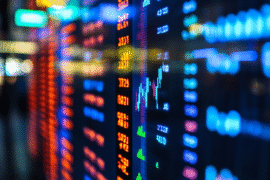This article may contain references to products or services from one or more of our advertisers or partners. We may receive compensation when you click on links to those products or services. Nonetheless, our opinions are our own.
The information presented in this article is accurate to the best of our knowledge at the time of publication. However, information is subject to change, and no guarantees are made about the continued accuracy or completeness of this content after its publication date.
The defense industry is an attractive option to explore as you move through the dynamic world of investment opportunities. With rising geopolitical tensions and a heightened focus on national security, investors are investigating how to strengthen their portfolios with assets that offer both growth potential and stability. We’ll explore the top three Exchange-Traded Funds (ETFs) that defense-focused investors are turning to. These ETFs provide exposure to leading companies in the defense industry, allowing you to align your investment strategy with the sector’s prospects for resilience and profitability.
- Identifying the Trends in Defense Investments
- The Impact of Geopolitical Events on ETFs
- Top Defense ETFs to Watch
- Exploring Defensive ETFs for Broader Stability
- Evaluating Performance Metrics to Guide Your Choices
- How to Diversify with Defense ETFs
- Practical Steps to Align Investments with Your Values
- Conclusion
- Frequently Asked Questions
- Recommended Reads
Identifying the Trends in Defense Investments
When evaluating investment opportunities in the defense sector, it’s important to understand the broader trends influencing the market. Over the past few years, this landscape has been shaped by:
- Rising geopolitical tensions
- Government budget increases for defense
- Rapid innovation in defense technologies
These shifts highlight the growing importance of national security and reveal opportunities for forward-looking investors. Staying attuned to these factors can help you position your portfolio for long-term benefits.
Trends in Defense Investment
| Trend | Description |
|---|---|
| Increased Government Budgets | Many nations are allocating more funds to defense spending. |
| Focus on Innovation | Emphasis on advanced technologies like drones and artificial intelligence. |
| International Collaborations | Partnerships between countries and private firms to enhance defense systems. |
Knowing these trends helps you evaluate the risks and opportunities that come with defense sector investments.
The Impact of Geopolitical Events on ETFs
Geopolitical events can significantly influence financial markets, especially defense-related ETFs. Here’s how these dynamics typically affect performance:
- Rising tensions often lead to increased military spending, which can benefit defense companies and their ETFs.
- Political instability can introduce volatility, but defense firms often see demand rise in such environments.
- Shifts in international alliances may impact global supply chains and the financial outlook for certain defense manufacturers.
Monitoring global developments enables investors to make informed choices when adding or adjusting defense ETFs in their portfolios.
Top Defense ETFs to Watch
The following ETFs are among the most widely held and represent strong positions in the aerospace and defense sectors.
| ETF Name | Expense Ratio | YTD Performance |
|---|---|---|
| iShares U.S. Aerospace & Defense ETF (ITA) | 0.43% | 12.58% |
| SPDR S&P Aerospace & Defense ETF (XAR) | 0.35% | 15.92% |
| Invesco Aerospace & Defense ETF (PPA) | 0.55% | 10.30% |
Each fund provides diversified exposure to companies involved in defense technologies, production, and services.
Exploring Defensive ETFs for Broader Stability
In addition to sector-specific ETFs, you may want to consider more broadly defensive ETFs that are designed to weather economic uncertainty:
| ETF Name | Expense Ratio | 5-Year Return |
|---|---|---|
| Vanguard Consumer Staples ETF (VDC) | 0.10% | 12.24% |
| iShares U.S. Utilities ETF (IDU) | 0.43% | 10.15% |
| SPDR S&P Dividend ETF (SDY) | 0.35% | 9.78% |
These ETFs focus on sectors such as utilities, consumer goods, and dividend-paying stocks that tend to remain stable during economic downturns.
Voted "Best Overall Budgeting App" by Forbes and WSJ
Monarch Money helps you budget, track spending, set goals, and plan your financial future—all in one app.
Get 50% OFF your first year with code MONARCHVIP
Evaluating Performance Metrics to Guide Your Choices
Before selecting an ETF, assess the following key performance indicators:
- Total Return: Measures how much the ETF has gained or lost over a specific period.
- Expense Ratio: Reflects the cost of managing the fund; lower is generally better.
- Tracking Error: Indicates how closely an ETF follows its benchmark index.
Here’s a sample comparison:
| ETF Name | Total Return (5 Yr) | Expense Ratio | Tracking Error |
|---|---|---|---|
| Defensive Shield ETF | 12.5% | 0.15% | 0.2% |
| Global Security Fund | 9.3% | 0.20% | 0.5% |
| Fortress ETF | 15.7% | 0.10% | 0.1% |
By reviewing these metrics, you can select ETFs that align with your financial goals and risk tolerance.
How to Diversify with Defense ETFs
Adding defense ETFs to your portfolio can be a strategic move. Consider the following advantages:
- Revenue Stability: Many defense companies operate under long-term government contracts.
- Innovation Growth: Companies often invest heavily in new technologies.
- Consistent Demand: National security remains a priority across administrations and regions.
Top defense-focused ETFs include:
| ETF Name | Expense Ratio | Top Holdings |
|---|---|---|
| iShares U.S. Aerospace & Defense ETF (ITA) | 0.43% | Boeing, Raytheon Technologies, Lockheed Martin |
| SPDR S&P Aerospace & Defense ETF (XAR) | 0.35% | General Dynamics, Northrop Grumman, L3Harris |
| Invesco Aerospace & Defense ETF (PPA) | 0.55% | Honeywell, Textron, Thales |
Integrating these ETFs can diversify your exposure while positioning you in a sector backed by strong fundamentals.
Practical Steps to Align Investments with Your Values
If you want your investments to reflect your personal principles, consider the following steps:
- Define Your Priorities: Whether you care about sustainability, corporate ethics, or national security, start by clarifying what matters most.
- Research with ETF Screeners: Use online tools to filter ETFs by values-based criteria.
- Review Holdings: Look closely at the companies within each fund to ensure they match your beliefs.
- Compare Fees and Returns: Balance alignment with practical metrics such as expense ratio and performance.
Here’s an example of value-focused ETFs:
| ETF Name | Focus Area | Expense Ratio | 1-Year Return |
|---|---|---|---|
| SPYG | Growth stocks | 0.04% | 24.5% |
| VSGX | Sustainable Energy | 0.20% | 30.1% |
| DES | Dividend Stocks | 0.35% | 18.3% |
You can create a purpose-driven portfolio by combining financial strategy with your core values.
Conclusion
The defense sector is a great place to invest because it has both growth and stability, especially in today’s unstable global economy. You can make your portfolio more stable by looking into ETFs that focus on aerospace, defense technology, and national security. This is a long-term trend that is supported by government investment and innovation. The right defense ETF can be a great anchor for your overall strategy, whether you want to protect your money during downturns or make sure your values match your financial goals. Take the time to look into your options, compare metrics, and pick funds that fit both your financial goals and your moral beliefs. If you know what you’re doing, you’ll be better able to deal with market uncertainty with confidence.
Frequently Asked Questions
What are the top ETFs that defense-focused investors are favoring?
The iShares U.S. Aerospace & Defense ETF (ITA), SPDR S&P Aerospace & Defense ETF (XAR), and Invesco Aerospace & Defense ETF (PPA) are currently among the most popular. These funds provide targeted exposure to defense industry leaders.
Why are investors interested in these specific ETFs?
These ETFs focus on companies that benefit from increased military budgets and government defense contracts. As tensions rise globally, these firms often see steady demand, making the funds attractive during uncertain periods.
How do these ETFs perform compared to traditional investments?
Defense ETFs have historically shown resilience during periods of market volatility. While they don’t guarantee gains, their ties to government spending make them more stable than some broader equity sectors.
What should investors consider before buying defense ETFs?
You should evaluate geopolitical developments, historical returns, expense ratios, and the fund’s underlying holdings. These elements can influence both risks and long-term performance.
Are there risks associated with defense ETFs?
Yes. Defense ETFs may be affected by changes in political leadership, budget cuts, regulatory shifts, and ethical debates about military spending. It’s important to weigh these factors carefully.

Reviewed and edited by Albert Fang.
See a typo or want to suggest an edit/revision to the content? Use the contact us form to provide feedback.
At FangWallet, we value editorial integrity and open collaboration in curating quality content for readers to enjoy. Much appreciated for the assist.
Did you like our article and find it insightful? We encourage sharing the article link with family and friends to benefit as well - better yet, sharing on social media. Thank you for the support! 🍉
Article Title: Top 3 ETFs Defense Hawks Are Buying
https://fangwallet.com/2025/06/11/3-etfs-defense-hawks/The FangWallet Promise
FangWallet is an editorially independent resource - founded on breaking down challenging financial concepts for anyone to understand since 2014. While we adhere to editorial integrity, note that this post may contain references to products from our partners.
The FangWallet promise is always to have your best interest in mind and be transparent and honest about the financial picture.
Become an Insider

Subscribe to get a free daily budget planner printable to help get your money on track!
Make passive money the right way. No spam.
Editorial Disclaimer: The editorial content on this page is not provided by any of the companies mentioned. The opinions expressed here are the author's alone.
The content of this website is for informational purposes only and does not represent investment advice, or an offer or solicitation to buy or sell any security, investment, or product. Investors are encouraged to do their own due diligence, and, if necessary, consult professional advising before making any investment decisions. Investing involves a high degree of risk, and financial losses may occur including the potential loss of principal.
Source Citation References:
+ Inspo
There are no additional citations or references to note for this article at this time.











































